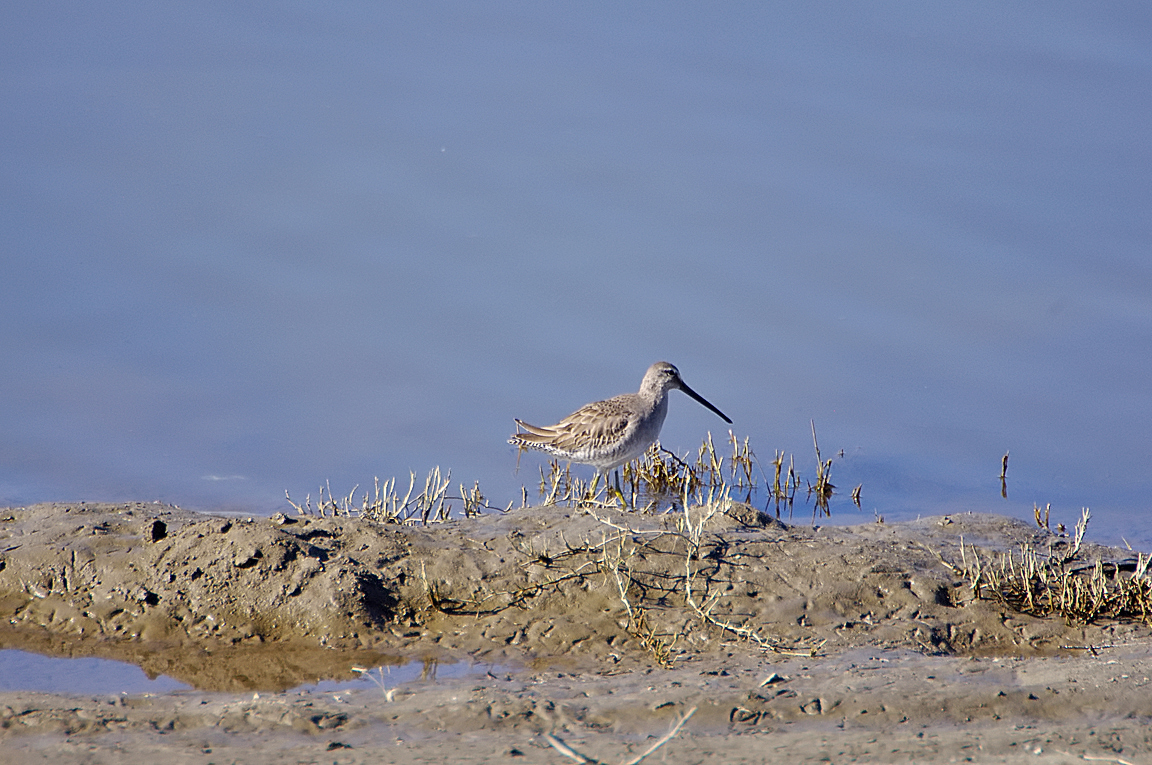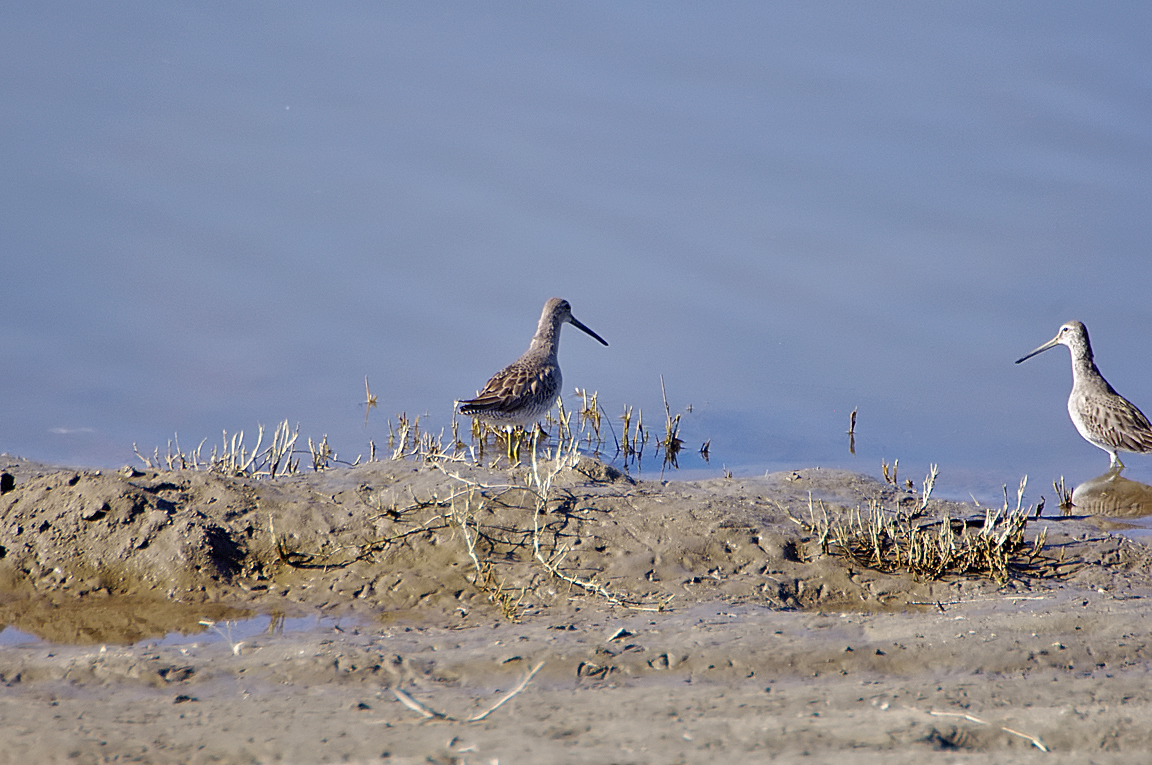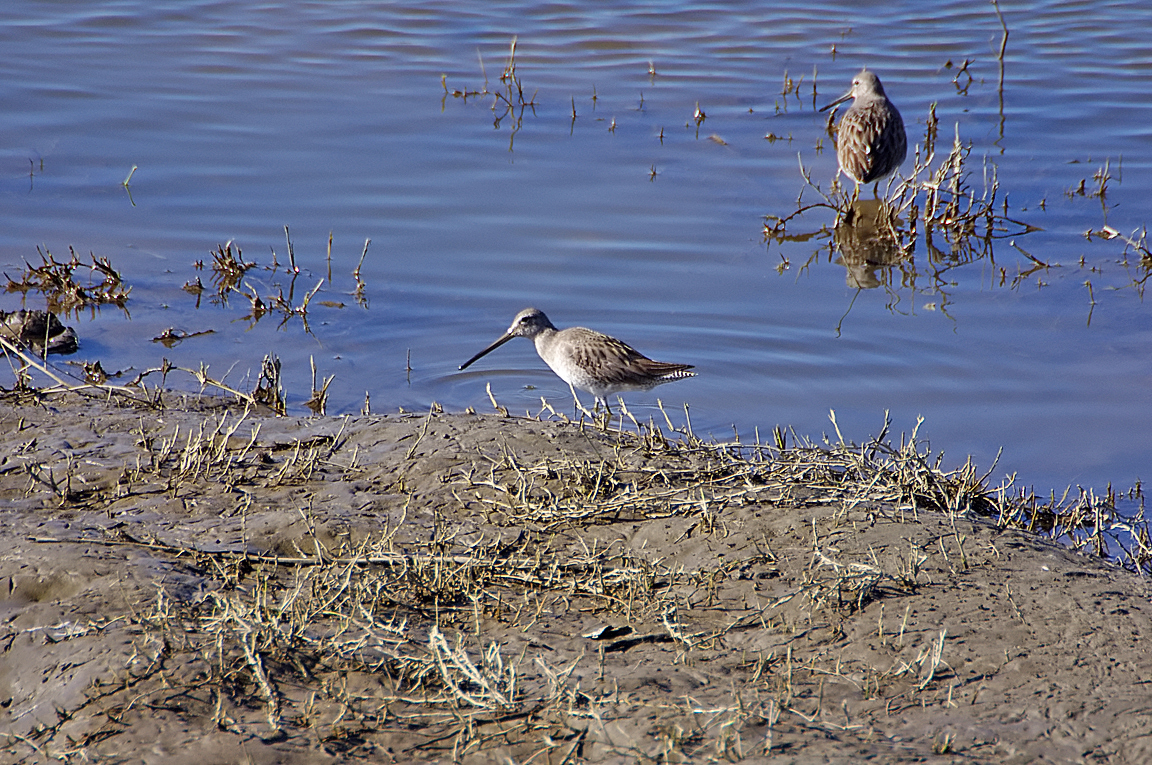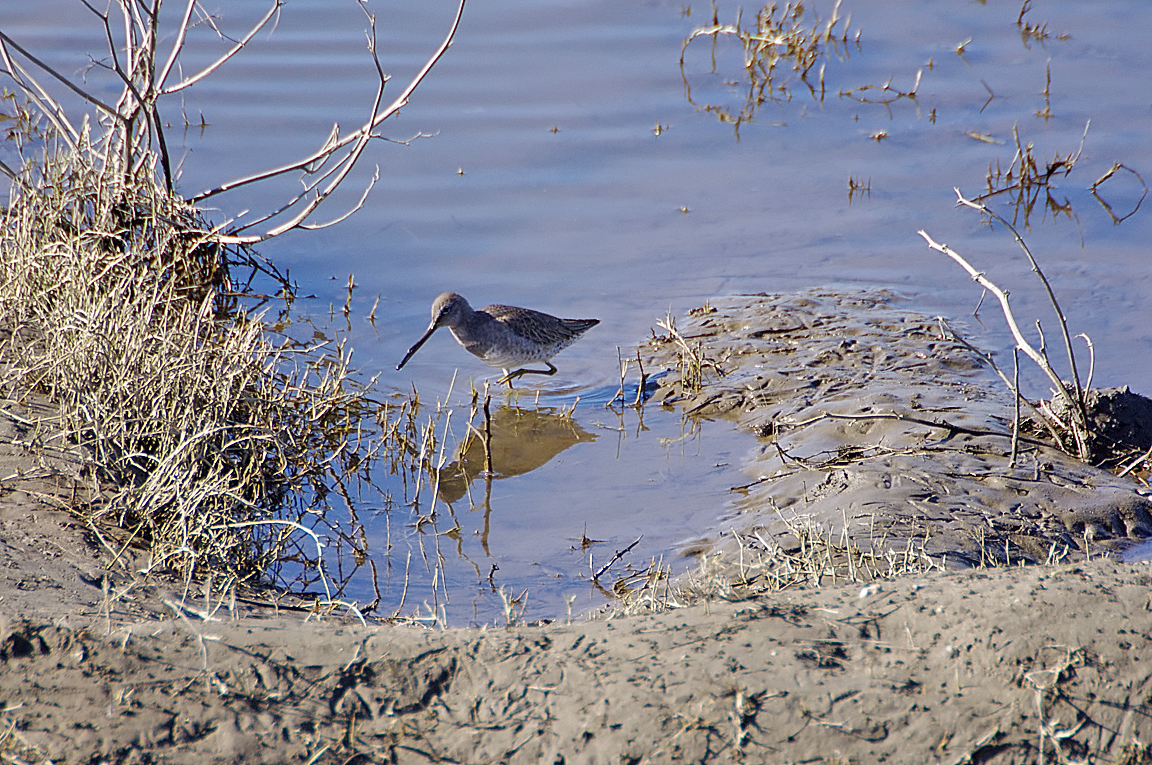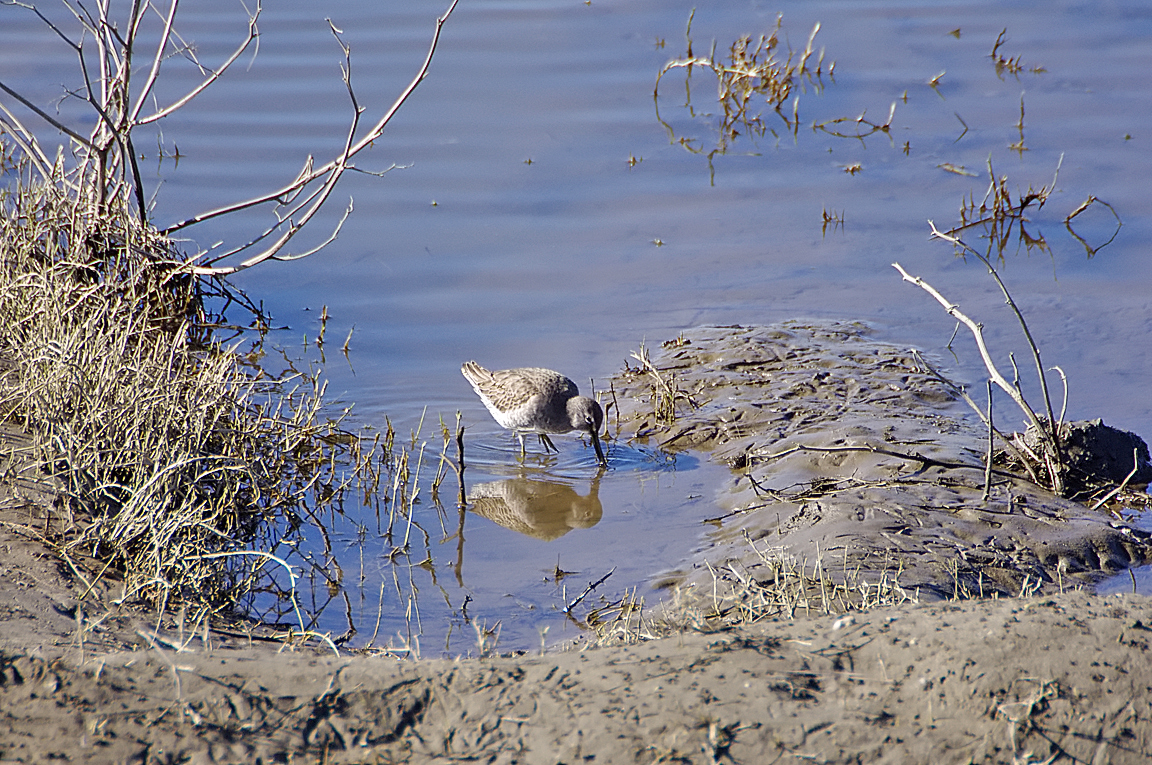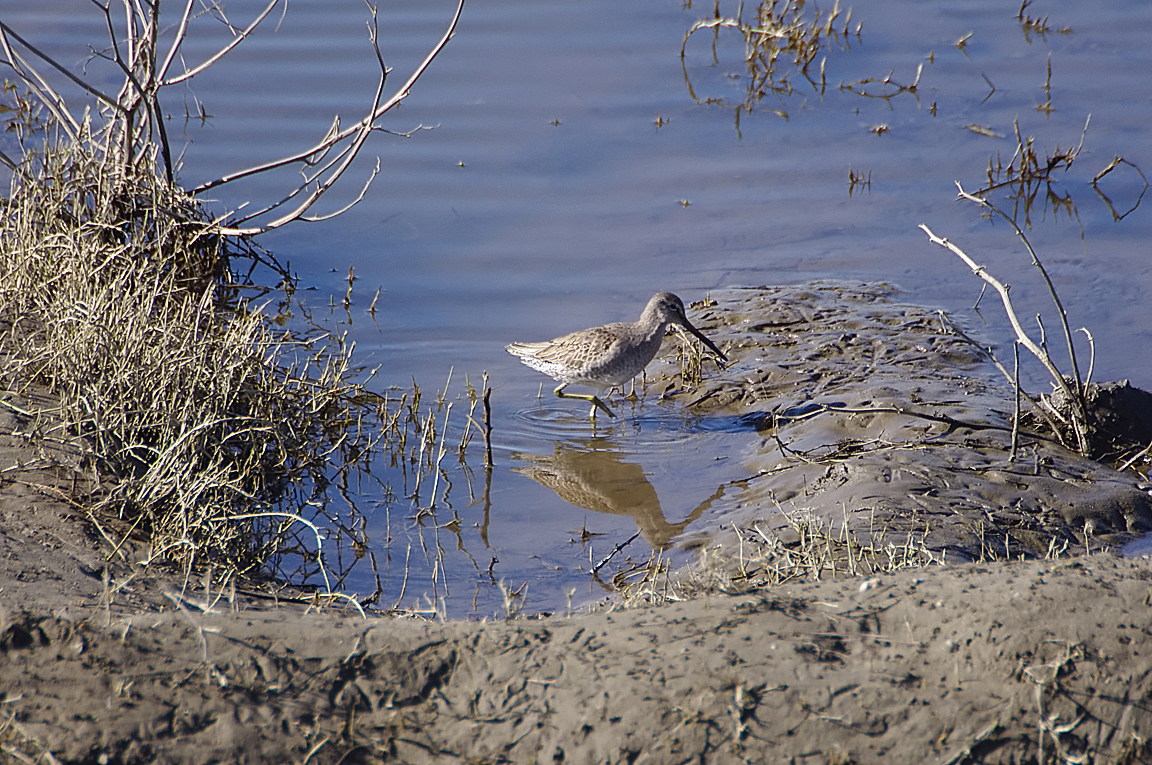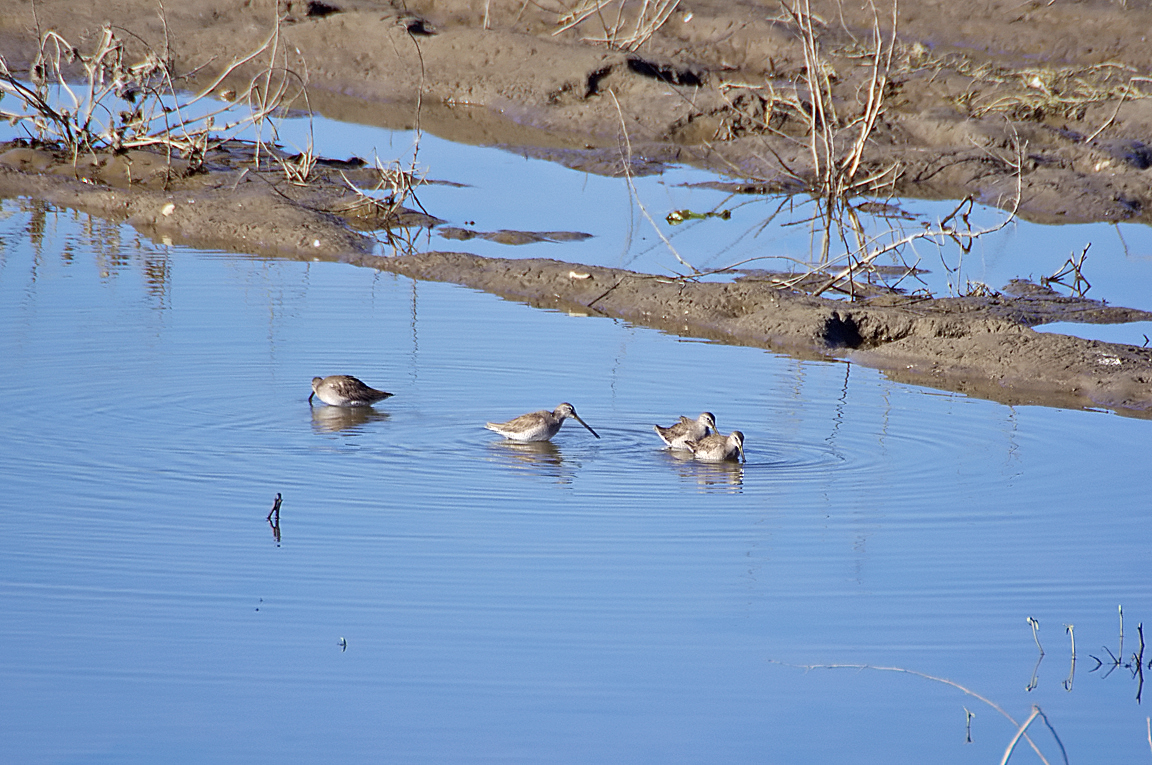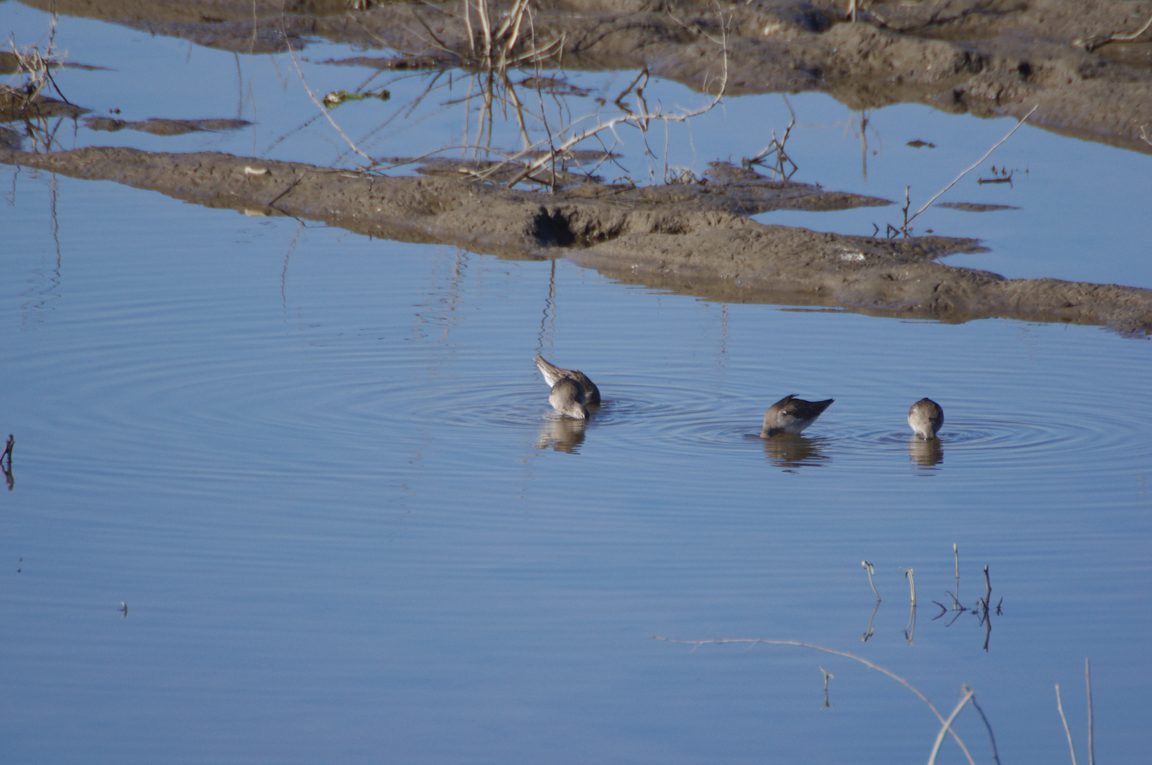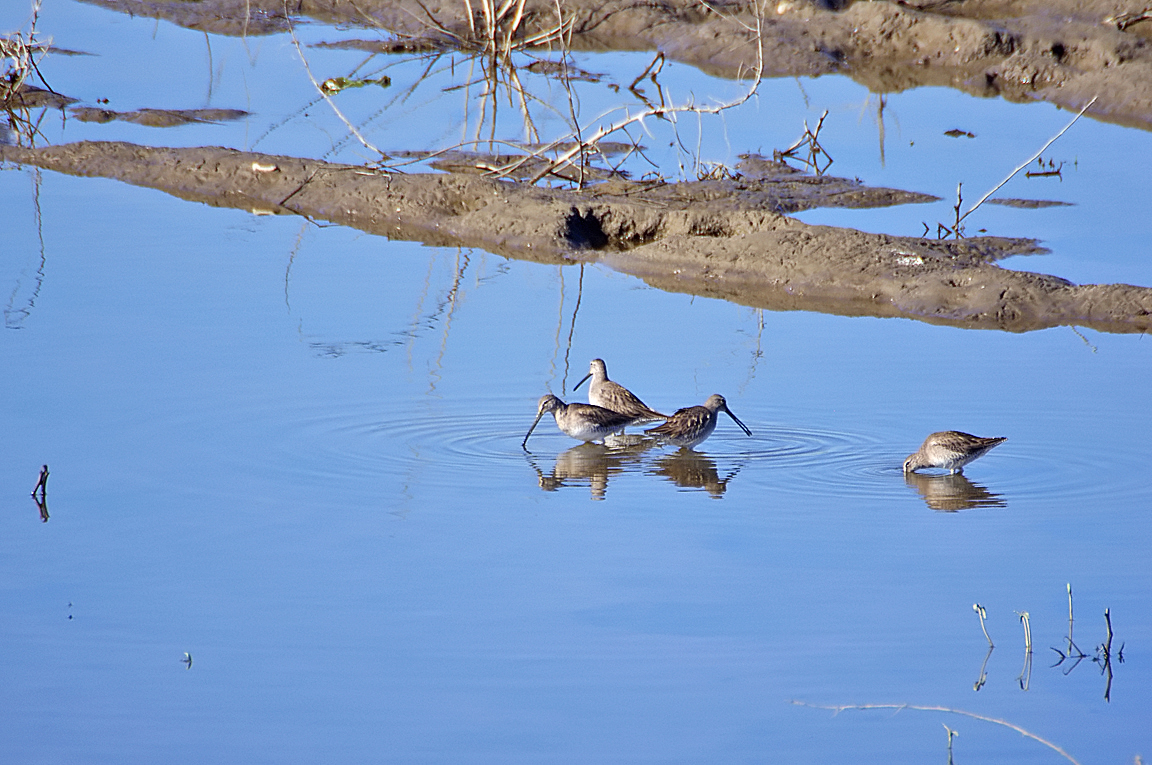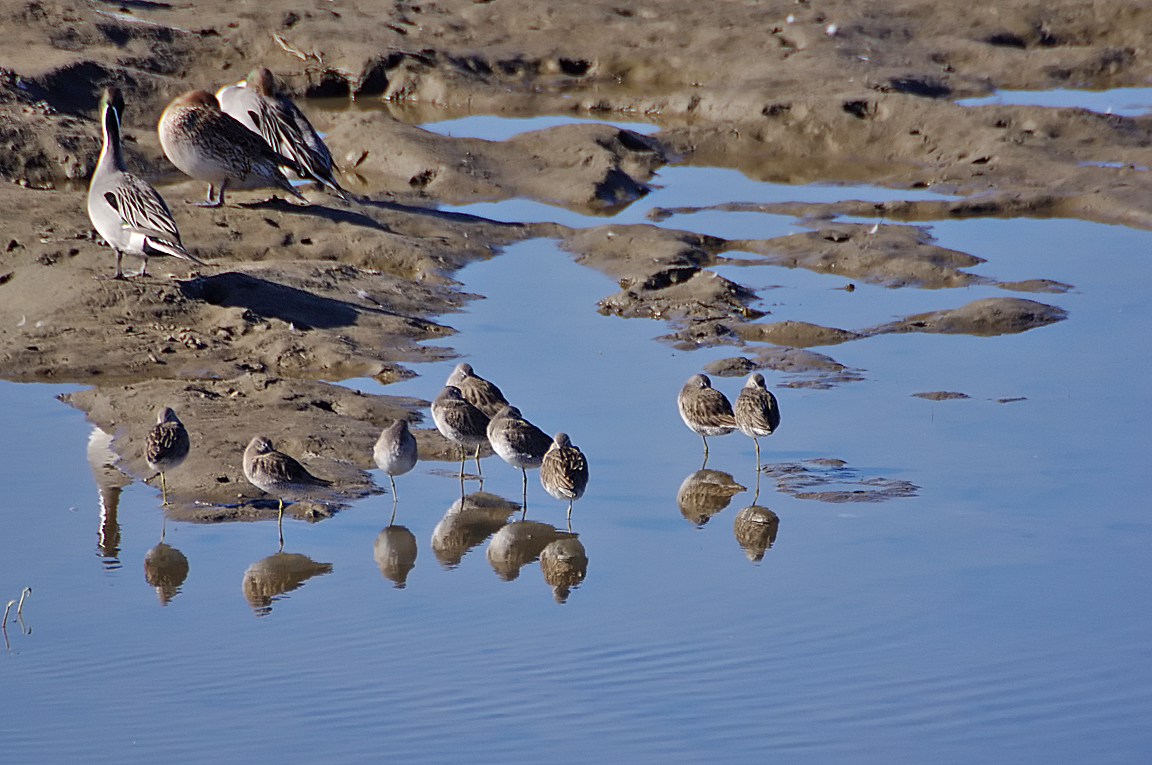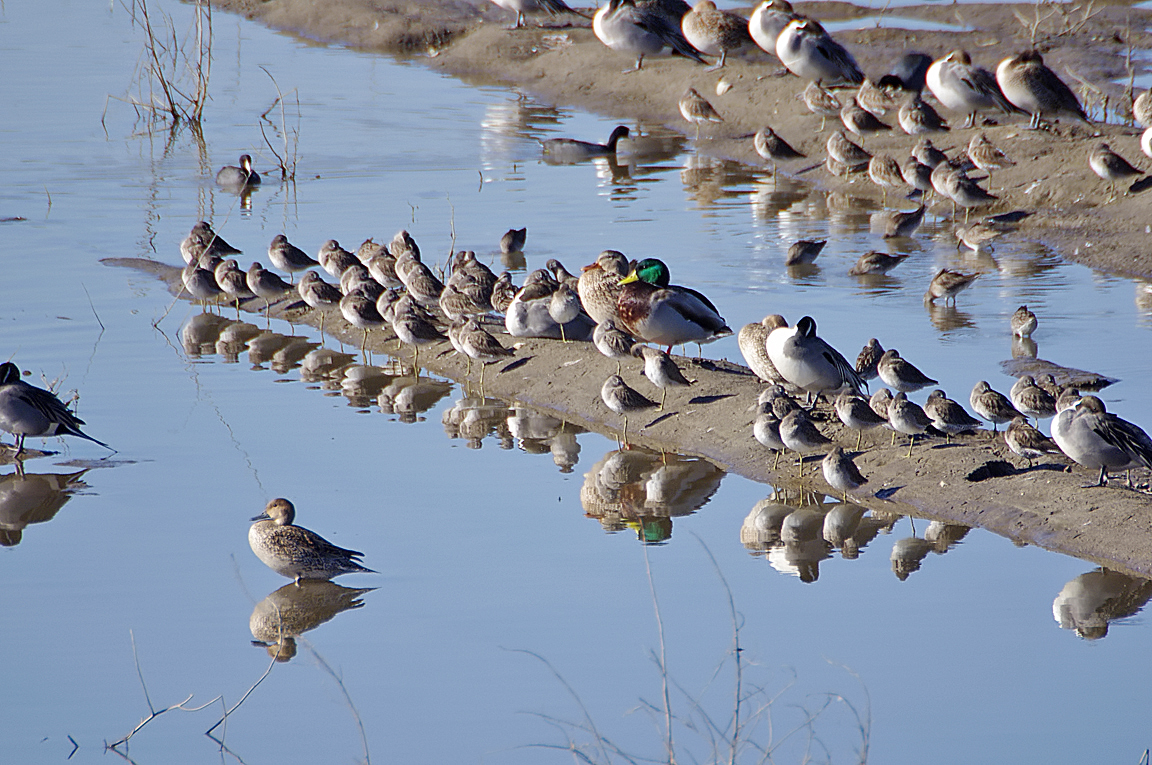|
|
|
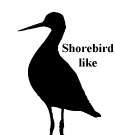 |
Long-billed Dowitcher
|
| Limnodromus scolopaceus | |
A long-billed shorebird recognizable for both its distinctive profile and sewing machine-like feeding action, the Long-billed Dowitcher is most common west of the Mississippi.
Interesting Information
-
Most Siberian breeding Long-billed Dowitchers likely migrate to the Americas during the winter.
-
Although both sexes share incubation of the eggs, only the male takes care of the young once they hatch.
-
A group of sandpipers has many collective nouns, including a "bind", "contradiction", "fling", "hill", and "time-step" of sandpipers.
-
Their bills are full of nerve endings, which are useful for sensing prey. They walk along slowly, lifting their heads up and down like a sewing machine.
Description
Adult Description
-
Medium-sized shorebird.
-
Bill twice as long as head.
-
Moderately long, pale legs.
-
Length Range: 28-32 cm (11-12.5 in)
-
Weight: 99 g (3.5 oz)
-
Size: Medium (9 - 16 in)
-
Color Primary: Brown, Rufous or Rust
-
Underparts: Rust-brown with black bars.
-
Upperparts: Black, gray-brown and rust-brown, appearing scaled.
-
Back Pattern: Striped or streaked, Mottled
-
Belly Pattern: Solid
-
Breast Pattern: Scaled or Scalloped
Sex Differences
Sexes Simliar
Immature
Juvenal plumage with brownish gray chest and flanks, less spotting and barring than breeding adults. Back feathers dark centered with broad buffy edges, giving a slightly scaly appearance. Tertials dark grayish with narrow rusty edges.

Photo taken from: The Sibley Field Guide by David Allen Sibley
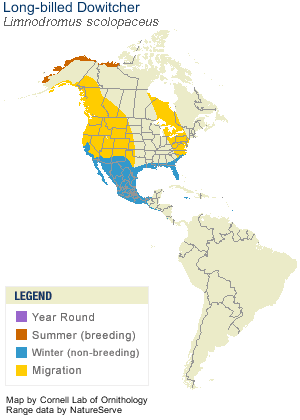
© 2003 Cornell Lab of Ornithology
|
Habitat |
|
Found on mudflats, marshes, and edges of freshwater ponds and marshes during winter. |
|
Behavior |
|
Probes deeply into soft substances to the depth of the bill, sometimes submerging the head. Short jabbing and probing in distinctive "sewing machine" motion. |
|
Food |
|
Aquatic invertebrates and insects. |
Taxonomy
| Kingdom: | Animalia |
| Phylum: | Chordata |
| Subphylum: | Vertebrata |
| Class: | Aves |
| Order: | Charadriiformes |
| Family: | Scolopacidae |
| Genus: | Limnodromus |
| Species: | Limnodromus scolopaceus |
Similar Species |
|
|
Bird Sound |
|
Flight call a sharp "peep," or quick series of two to five notes, "pee-p-p-pep." |
|
Eggs look like this |
|
Photo taken from: ARCTOS Collaborative Collection Management Solution |
